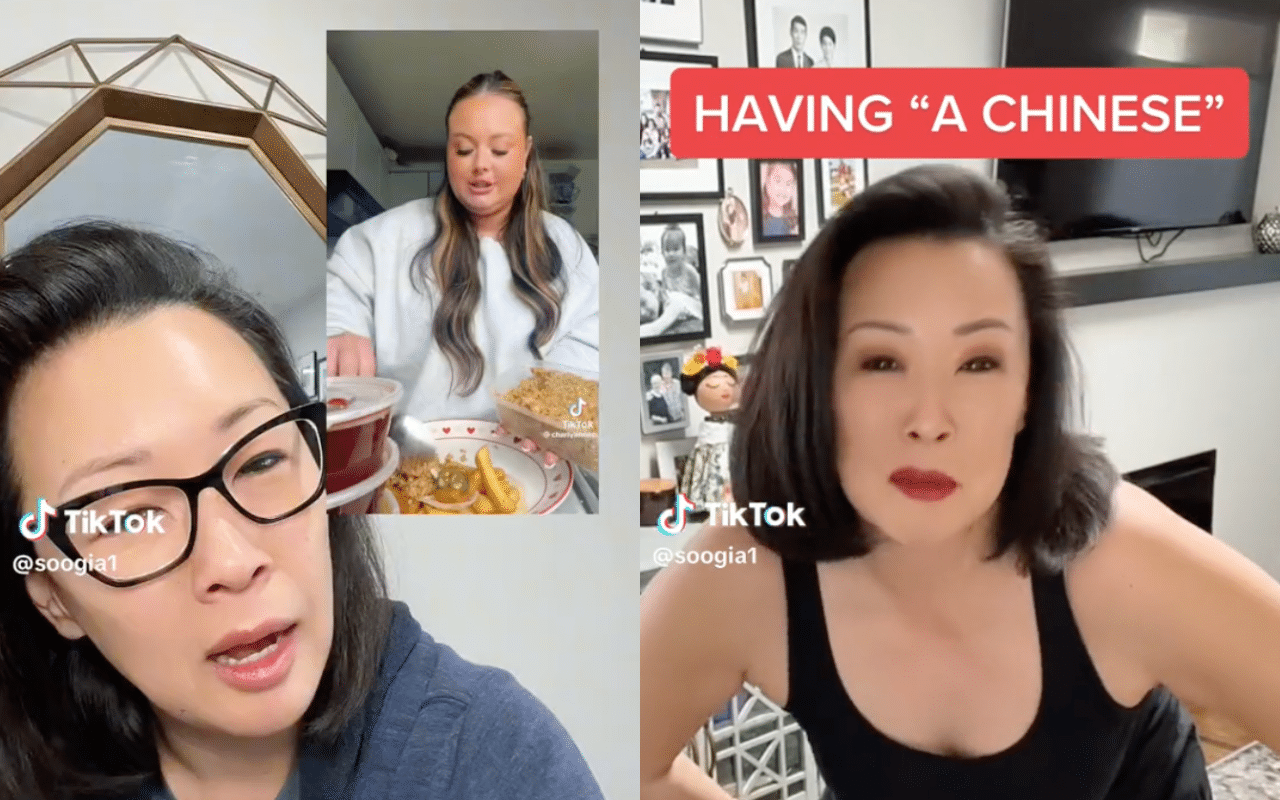
Confusion surrounding British Chinese food is dominating the internet after American TikTok creators questioned why Brits use the term “a Chinese” to describe grabbing takeaway food.
Earlier this week, popular American TikTok creator @soogia.1 went viral for her criticism of British Chinese takeaway food.
While her outrage was partly over the nature of the cuisine— like hot chips and curry sauce, which are not typically associated with authentic Chinese food— it was more so due to the way Brits refer to the food.
Rather than saying they’re ordering “Chinese food” or “Chinese takeout,” many Brits seem to say they’re ordering “a Chinese.”
“I know it’s not intended to be racist, but it just kind of feels like it is a little,” Soogia said in her video that now has over 3.2 million views. “Here in the United States we call it ‘Chinese food’ like we do all other foods […] Do British people also say ‘I’m going out for a Greek or a Mexican or an Italian’? Or is it exclusively just when they talk about Chinese food?”
@soogia1 The Al Gore Rhythm can be so funny sometimes. #achinese #chinesefood #britishchinesefood #americanchinesefood #interestingcombination #currysauce #chickenballs #chips #greenscreenvideo
♬ Little Things – Tiqta
Soogia (and other Americans who have since weighed in on the debate) have faced intense backlash from Brits who claim it’s a colloquial way they refer to all types of food, like “a full English” to refer to a British breakfast and “an Indian” to refer to Indian takeaway food.
There are also grammatical differences in the way British English speakers and American English speakers structure these phrases. “In British English, speakers refer to ‘a Chinese takeaway’ as a singular object, similar to a meal,” explains Laura Holliday for Mashed. This seems unusual to people in the U.S., where takeout is used as a mass noun, similar to the word food.”
Soogia has since made a follow-up video, explaining that Americans may use the term “a Chinese” or “a Mexican” in a derogatory sense to strip that person of their humanity, hence why it may sound racist to those in the US.
@soogia1 Stitch with @Hayley Phillips @Corys World @Lauren Griffiths @Charly Anne C I am sorry for the negativity that this brought to your pages. Please know I made every effort to prevent it. I was sincerely trying to understand. #achinese #chinesetakeout #chinesetakeaway
♬ A Day in My Life – Soft boy
On if this British phrasing actually is racist or not, the answer is complex. Most Brits claim not at all, while others note there’s some cultural context missing from this debate among the UK defenders.
“It is simply a lazy way of speech, a slang if you want to call it that,” explains food blogger @foodishbeauty2.0, a first-generation immigrant who repatriated back to China after living in the UK for more than two decades. “The word or the phrase that is being omitted here is simply ‘takeaway’, hence why you’ll hear British people say ‘having an Indian’, ‘having a Chinese’ very often.”
Despite this, the creator said that she would not use that term, as it doesn’t sound “very respectful,” which is why can be easily mistaken for racism from the American perspective.
She also notes that the term “a Chinese” does have racist origins, as it is the modern, less-offensive derivative of a slur that Brits previously used when referring to Chinese takeaway food.
This is some context that people living in the UK— both British and otherwise— have also pointed out.
@foodishbeauty2.0 #stitch with @Soogia (soo-jee-yah) Please tag @Soogia (soo-jee-yah) so she may see this! 🙌🏼 #achinese #britishchinesefood #britishchinese #chinesetakeout #britishchinesetakeaway #britishfood #uk #chinesetakeaway #chinesefood #culturaldifference #fypシ゚viral
♬ original sound – TJ | CBeauty+Life in Hong Kong
Other Brits have emphasised that there are differences between the food offered at Chinese takeaway shops in the UK and the food offered at Chinese restaurants— a piece of information that many Americans are missing amid this debate.
“The history of a Chinese takeaway in the UK can be traced back to the late 19th and early 20th centuries when Chinese immigrants began arriving in the country,” food blogger Ruiz Asri told Mirror. “Many of them were drawn to the port cities of Liverpool and London, where they opened small, family-run eateries known as ‘chop suey houses’ to provide other immigrants with a taste of home and create a sense of community in their new home. As more immigrants arrived, the number of establishments increased which led to the modern version of the Chinese takeaway. Many of these establishments began offering a fusion of Chinese and British flavours to appeal to their new customers which is where we are at today.”
Cultural foods blending with the local palette is obviously not unique to the UK— think, Tex-Mex cuisine in America, or Kebab takeaway shops in Australia. This also opens up another conversation about the need for certain cultures to “white-wash” their food to appeal to the local market in the first place.
Though the debate appears to be dying down, it seems the context is significantly more complex than either party care to admit.

